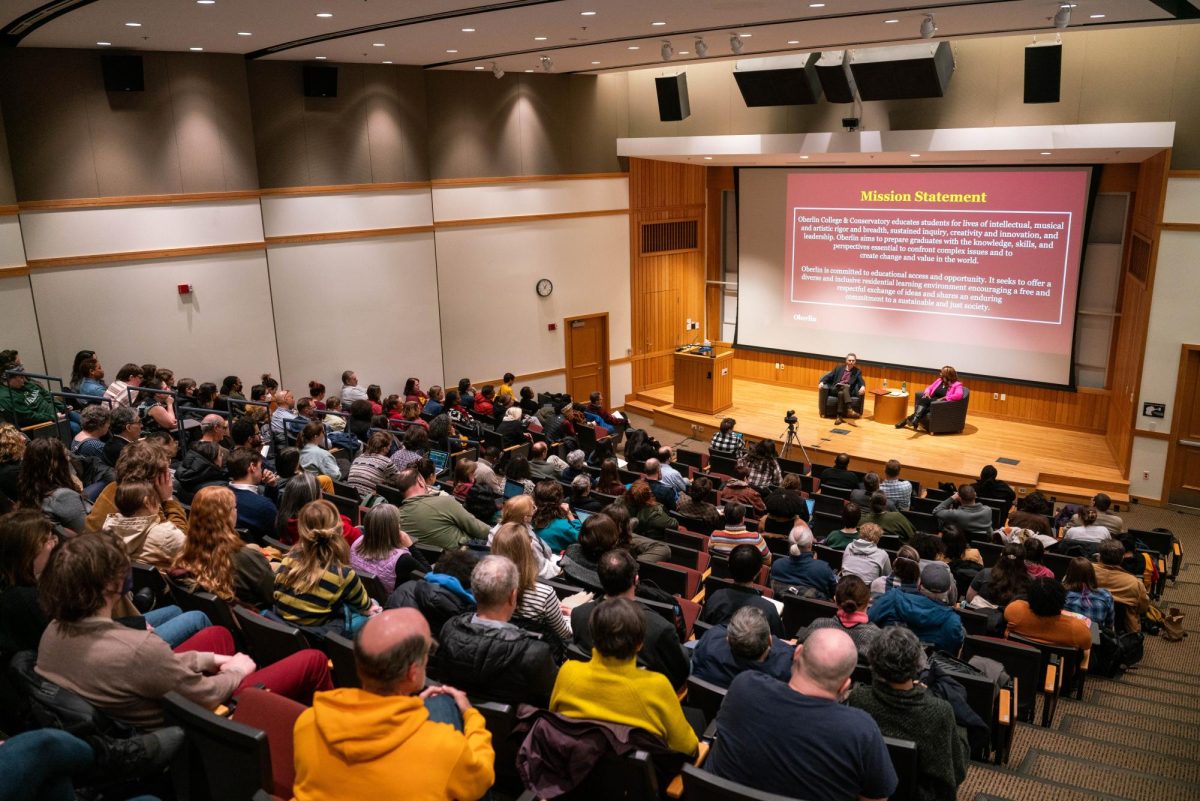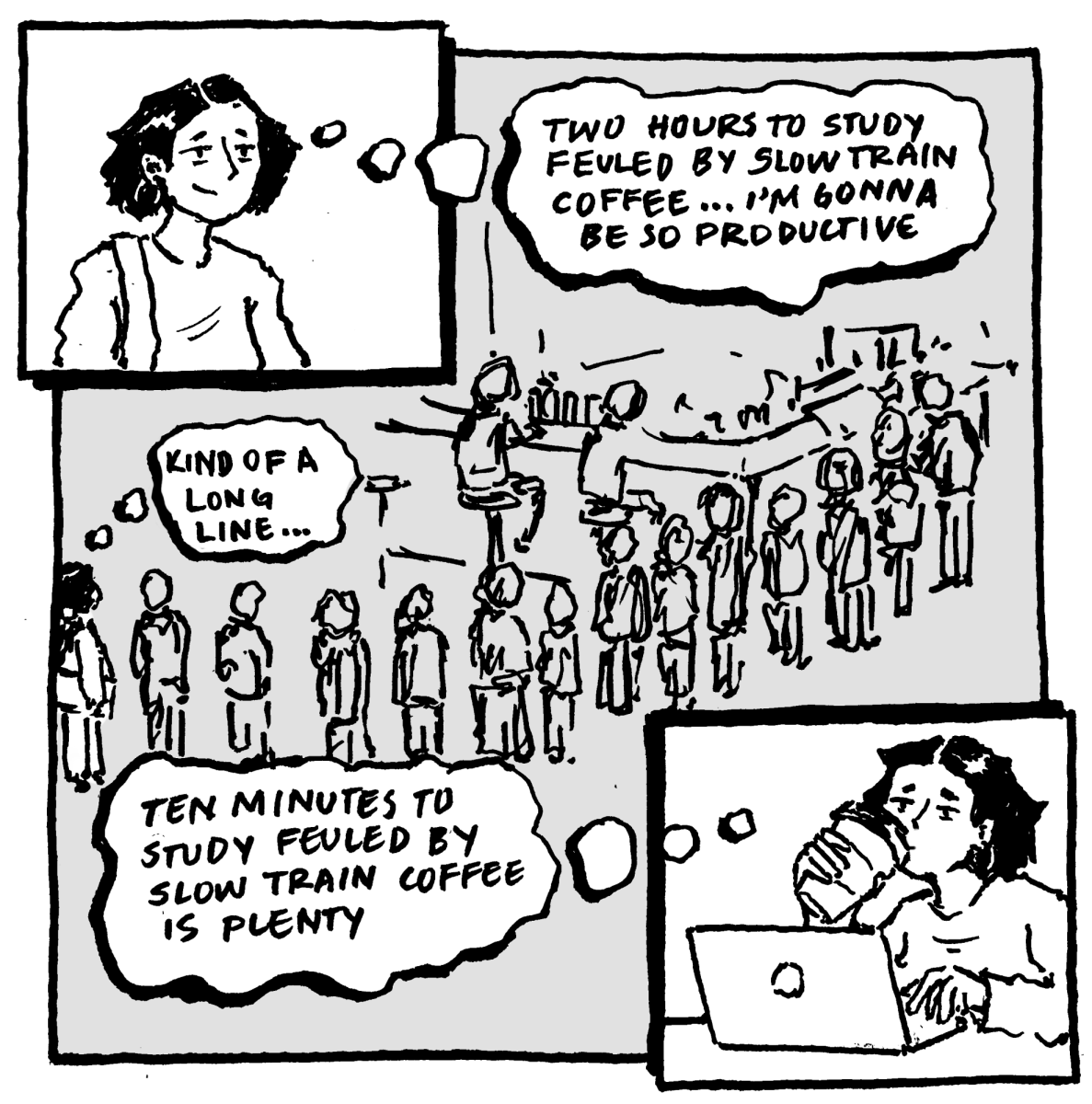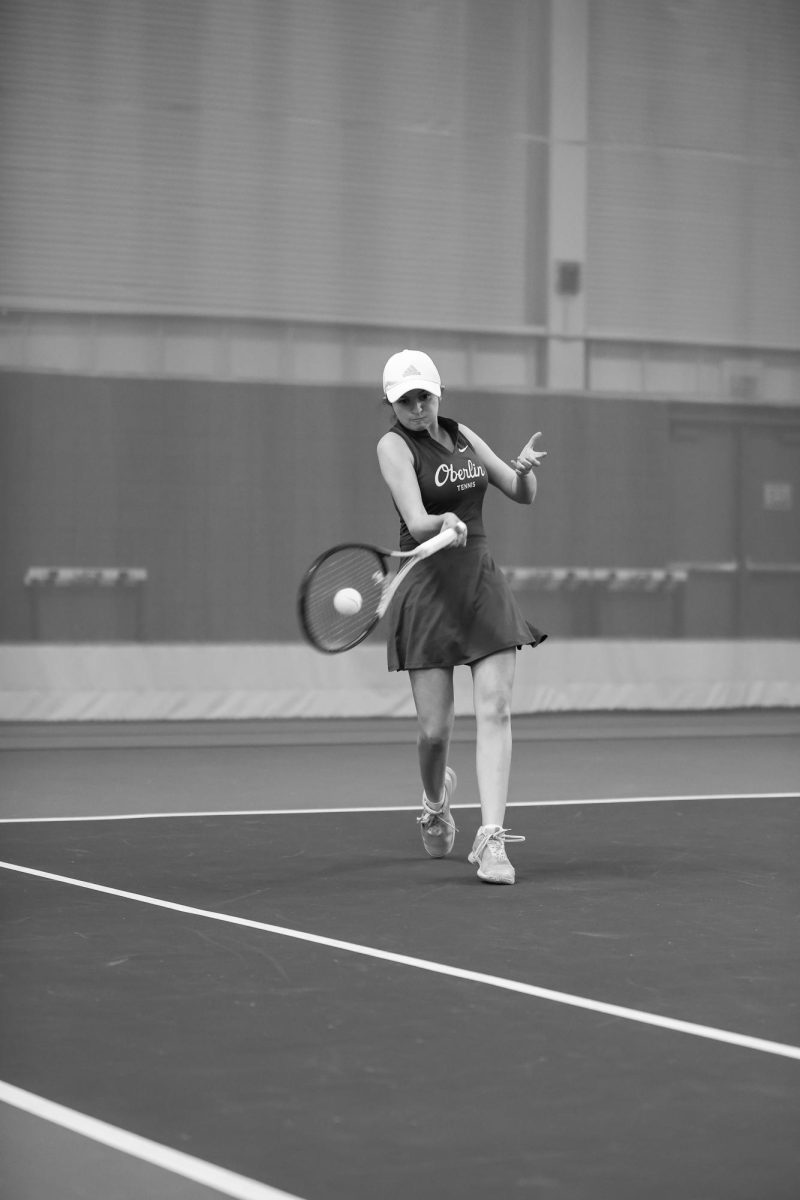Obies, Athletes Need to Break Down Barriers
March 4, 2011
She wasn’t nervous, you could see it in her eyes. They bounced to the left side of the court, and then to the right, then back again to the left. She was calculating. Dump it down low for a high percentage look? Drive it inside and hope for a foul? There wasn’t enough time to think. She paused for a moment at the top of the key and glanced at her bench, then pulled up for the shot.
Boom.
Oberlin’s Allison Anderson, arguably the best player in the conference, dropped a pivotal trey right in the face of her over-caffeinated defender. After putting her squad ahead with just over a minute remaining, she let a sly smirk slip onto her face. These are the moments that she plays for.
The only problem? Nobody was there to see it. Well, let me rephrase that. There were 15 people there to see it.
Such is the reality of home athletic events at Oberlin College. How bad is it? Let me put it this way: There were more Wooster fans than Oberlin fans at this particular basketball game. They drove more than an hour through the snow to watch a Wednesday night game in Oberlin. Wooster’s record up to that point? 2–18, with no conference wins.
This obviously begs the question: Why aren’t more students attending home athletic events here? The first argument I hear is, “Well, if our teams won more games, then more people would go.” Really? Let’s take a look at Division III Concordia University (which, admittedly, is not nearly as academically rigorous as Oberlin). Concordia has an undergraduate population of about 2,700 students, compared to 2,900 for Oberlin. In 2006, when the football team finished with an overall record of 4–6, Concordia finished 12th in the nation in attendance with a per-game average of 3,747. Oberlin’s football team finished with the same record last season, while also possessing one of the most impressive offenses in school history (worth mentioning, since the casual football fan is more drawn to offense). What was Oberlin’s per-game average last season? 1,243.
Sadly, most students here who read that number will inevitably think, “Hey, that’s not that bad.” Well, consider this: Oberlin surpassed 1,000 people in only three of those games. The teams that visited were Wittenberg (10–1 overall last season with a fan base known for traveling well), Allegheny (a playoff team that averaged over 4,000 people per game at home last season) and Case Western (which is right down the street). Without those games, Oberlin averaged 772 people per game last season. When you account for parents, alumni, townspeople and staff members of the athletic department, how many of those people do you think were students?
That’s when I hear the second argument, something like, “Well, Oberlin’s too difficult academically. I just don’t have the time to attend games because I’m too busy with class work.”
That’s funny. You didn’t seem too busy last Tuesday, when you celebrated afternoon lab by throwing down some vodka shots afterward. Or maybe you did it beforehand. Whatever. I’m not saying you should give up your drinking time for attending Oberlin sports games; I’m saying you should combine them. Unless you’re underage.
I don’t mean to imply that the student body chooses solely to get drunk over attend an athletic event. Instead, I’m saying that a sizeable portion of the student body would rather attend anything on campus than an athletic event.
Before I get too off-course here, let me mention Williams College. In an interview with the Review last semester, former athletic director Joe Karlgaard said, “We don’t have the reputation of a Williams College, which is constantly winning national championships at this level and is also a highly selective liberal arts college with a great academic reputation. Athletics is a big component of what it means to be at Williams College.”
Thank you, Dr. Karlgaard, for pointing out the problem here. Saying that athletics is not a big part of what it means to be at Oberlin is like saying that it’s annoying when freshmen walk by your window conversing at the top of their lungs at 3 a.m. on a Monday.
Williams College provides a slightly better subject for comparison than Concordia University. Recently named the top-ranked liberal arts college in the nation by U.S. News, Williams is similar to Oberlin not only in terms of academics (actually, it’s considered more rigorous) but also in terms of selectivity (both are rated as most selective) and student body size (2,100 compared to 2,900 for Oberlin).
Let me fill you in on the biggest difference between the two schools. This may take a minute.
Williams College, until 1994, was not permitted to participate in team NCAA competition. Since then, the school has participated in three national championships in men’s basketball, winning the title in 2003. Since becoming eligible to compete in the tournament, no team in the country has played in more Final Fours than Williams. The women’s crew team has won six national titles since 1994, joining the men’s tennis team (three titles), women’s tennis team (five), men’s cross-country team (two), women’s cross country team (two), women’s indoor track and field team (one) and men’s soccer team (one). Moreover, Williams’s lacrosse, volleyball, field hockey, golf and swimming teams are regular contenders in NCAA tournaments.
It has also won the NACD Director’s Cup, presented to the institution within each NCAA division that has the greatest overall success in NCAA-sanctioned championships, in 14 of the 15 years since its inception. What statistic truly exemplifies what it means to be a student at Williams College? Almost 50 percent of its students compete on at least one varsity, junior varsity or club team. Clearly, academic rigorousness is not an excuse for poor participation in and support of our athletic department.
That’s when I tend to hear the third, and most desperate, argument. Someone might say, “Well, Oberlin’s different. It’s just different.”
In terms of comprehension, this argument presents the athletic department with its most difficult problem. Even as I type this, it’s difficult for me to put it into words. Oberlin athletes, and this is just my own casual observation, seem to be stigmatized. The teams they participate on are regarded as less worthy of the student body’s time and attention. Some people feel that these students are inferior to, say, a voice major in the Conservatory. As a result, this campus is somewhat divided. Ask a varsity athlete to name his closest friends, and you’ll likely hear him say the names of other varsity athletes. To some degree, it works the same way with Connies. Granted, you’re more likely to have friends with similar interests than different ones, but the environment on this campus has transcended that logic.
Those who stigmatize the varsity athletes need to realize something: Everyone here was accepted to Oberlin College. Varsity athletes need to realize something: Nobody on this campus is going to feel sorry for you.
I’ll be the first to admit that I don’t attend enough Oberlin athletic events, and I’m the damn Sports editor. There are aspects of sports culture that will appeal to everyone on this campus, such as getting drunk and painting our bodies while screaming at each other (c’mon hipster, like you don’t do that in your room with your friends anyway). Collectively, we can make athletics a defining part of our culture.
As Oberlin students, we relish the fact that we chose a liberal and intellectual environment to pursue our undergraduate studies in (in other words, state schools blow). Everyone here has something about them, some unique quality, that influenced his or her decision to come here. Varsity athletes at Oberlin are less jock and more Bach than you think, and more likely to attend a concert at Finney than rage across campus (probably).
Remember that basketball game I mentioned before? The Yeowomen lost to Wooster in overtime, with the Scots hitting 13 of 14 free throws in overtime. Any coach will tell you that a raucous home crowd would’ve been more than enough to take care of that problem, but it wasn’t there. We weren’t there. Let’s support each other in our differences, whether it’s by an athlete attending an art show or a member of the StarCraft team getting drunk and streaking during halftime of a basketball game. Let’s whoop a team’s ass, then yell, “We can row-reduce a matrix, play Vivaldi’s Le Quattro Stagnioni and dunk on your squad, bitch.”






















